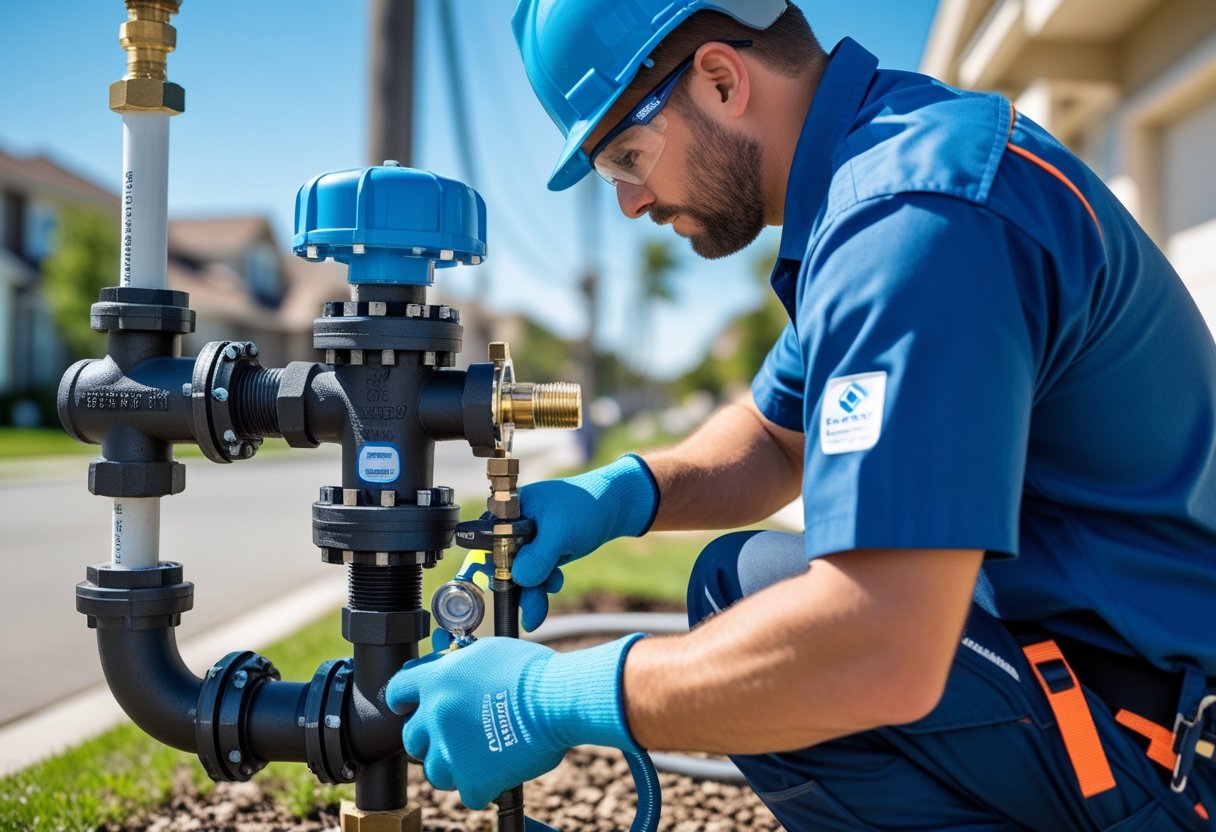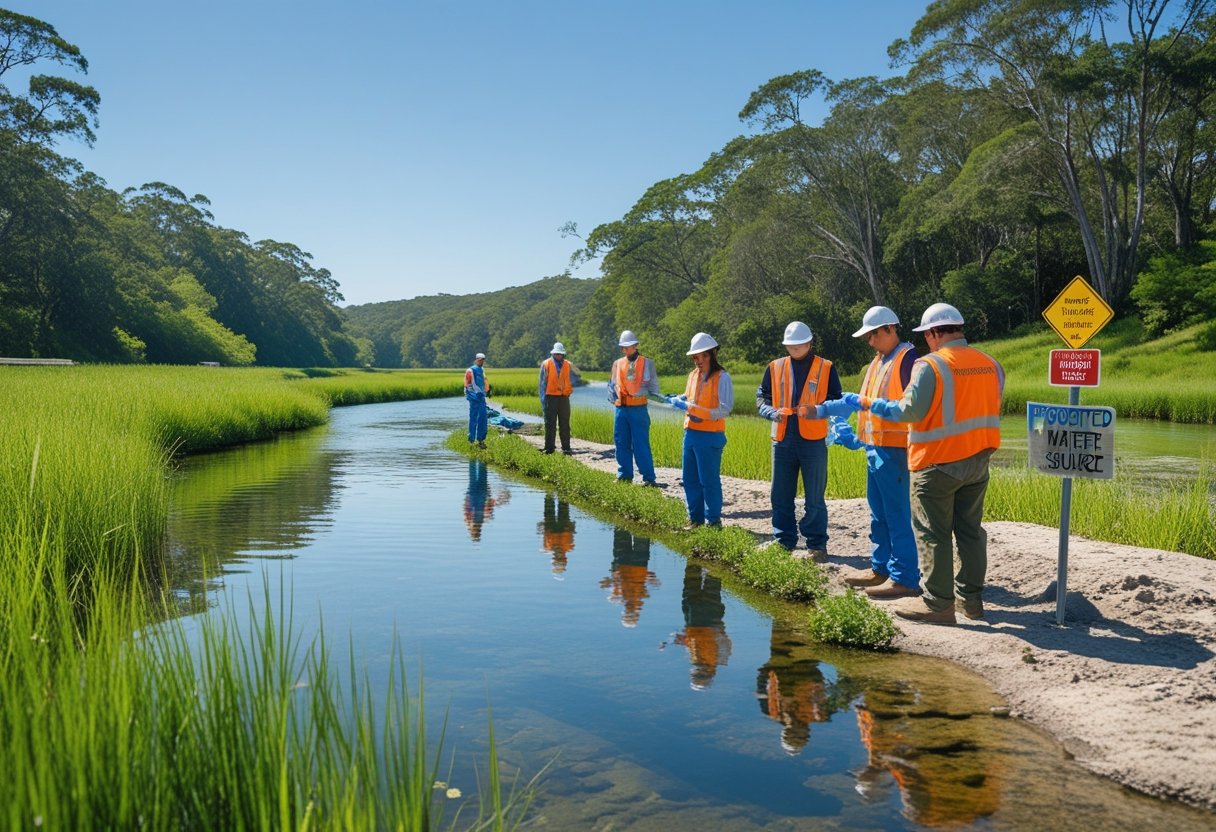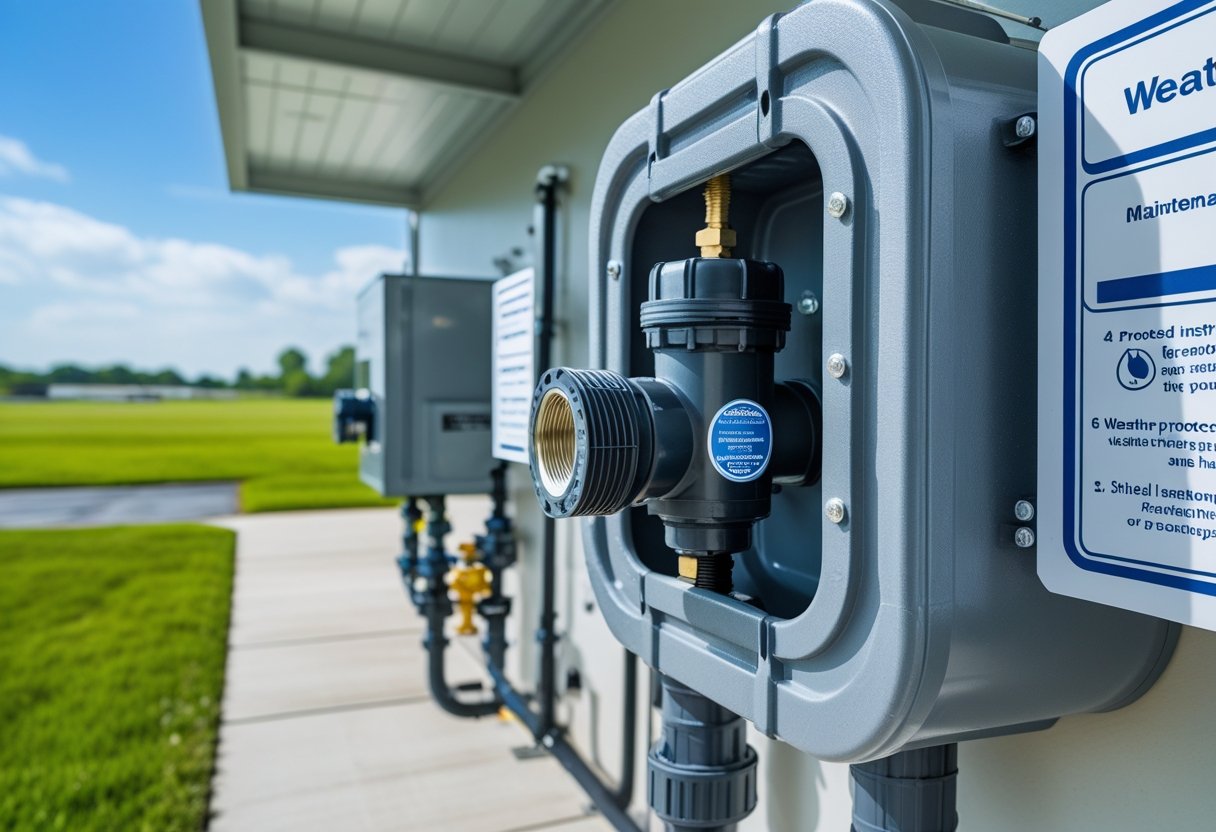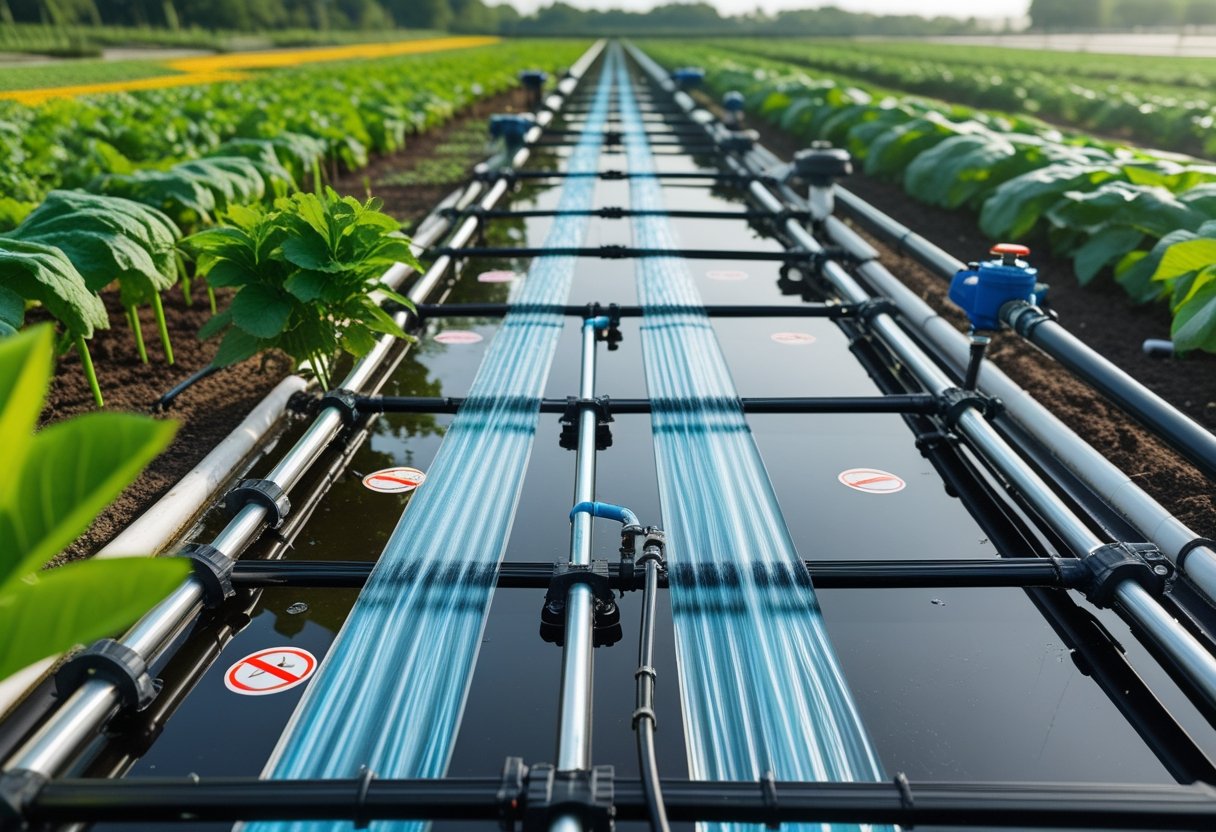Let’s be real—nobody wants a surprise fine or dirty water at home. That’s why backflow repairs matter. Backflow preventers stop contaminated water from sneaking into your clean supply. If these gadgets break or start leaking, you’re suddenly facing health risks and potentially hefty penalties from your local water agency.
Ignoring repairs or skipping annual testing can snowball into growing fines or even water shutoffs. Cities all over San Diego County require yearly backflow checks and fast fixes. If you stick with certified professionals like Pacific Backflow, you sidestep a lot of headaches and keep everything humming along.
Pacific Backflow’s been around San Diego for ages, making the whole process pretty painless. When you jump on repairs fast, you’re not just protecting your own place—you’re helping your neighbors and saving yourself from a world of stress.
Understanding Backflow and Its Risks
Backflow isn’t just some technical thing plumbers talk about. It’s what happens when water reverses direction and drags whatever’s in its way—dirt, chemicals, you name it—right into your drinking water. If you know what causes backflow and the risks, you’re way more likely to keep your water safe and avoid those annoying fines.
What Is Backflow?
Backflow is when water decides to go the wrong way, backing up into your clean water lines. This usually happens if there’s a sudden drop in water pressure—maybe a water main breaks or everyone’s using hoses at once. When that happens, dirty water or even chemicals can sneak into your home’s water supply.
It’s dangerous because it means stuff you definitely don’t want to drink can get into every tap. That’s why backflow preventers exist—to block that backward flow. If you want safe water, you need those devices working right.
Common Causes of Backflow
Two main things cause backflow: backpressure and backsiphonage. Backpressure pops up when the pressure in your pipes is higher than the supply—think pumps, boilers, or even just pipes sitting up higher than the main line. Backsiphonage happens when water pressure drops, like when a fire hydrant’s open down the street.
Other culprits? Broken pipes, cross-connections where clean and dirty water meet, or just old equipment giving up. Regular checks and maintenance usually catch these before they turn into disasters.
Potential Hazards to Water Supply
When backflow strikes, all sorts of nasty stuff can end up in your water—pesticides, chemicals, bacteria, even wastewater. That’s a recipe for illness, property damage, or legal trouble if you break water quality rules.
On top of health risks, you could be looking at expensive repairs and fines if your preventer isn’t up to code. Fixing things fast keeps your water safe and your wallet happier.
Pacific Backflow can handle quick testing and repairs so you’re meeting all the local rules. Staying on top of this keeps your water clean and your property out of trouble.
Legal Requirements and Fines for Backflow Issues
Backflow systems need regular testing and maintenance if you want to avoid penalties and keep your water safe. There are clear laws about this, and fines can pile up if you ignore them. Inspections are supposed to catch problems before they get out of hand.
Overview of Relevant Regulations
Most places—and definitely most of California—require annual backflow testing. Higher-risk properties might need it more often. The idea is simple: keep dirty water out of the clean supply.
A certified technician has to do the testing. Skipping it is a code violation and could mess with your water service. The details depend on where you live, but there’s usually paperwork involved—proof of testing for your water agency.
Pacific Backflow stays on top of the rules for you, handling the testing and filing so you don’t have to stress about missing something.
Typical Penalties for Non-Compliance
Skip or delay your backflow test? Your water provider will probably hit you with fines. And they don’t just stop—if you keep ignoring it, the penalties keep growing. Sometimes, you could be looking at daily charges until you fix the problem.
If you really drag your feet, they can even cut off your water. No water means no business, no showers, nothing—until you pass inspection. If contaminated water causes health issues, you could face lawsuits and even bigger bills.
It’s way cheaper and less painful to just handle repairs on time.
How Inspections Uncover Violations
Certified testers come out with their tools and check if your backflow preventer actually works. They’ll look for leaks, test the pressure, and make sure nothing’s broken.
They also double-check that your device meets all the local and state standards. Everything gets documented and sent off to the authorities so they know who’s in compliance.
If the tester finds a problem, you’ll need to fix it right away. Catching these issues early is a lot better than dealing with big violations or water contamination later.
Regular testing from folks like Pacific Backflow makes inspections less stressful and keeps you on the good side of the water district.
Benefits of Timely Backflow Repairs
Jumping on backflow repairs as soon as something’s off saves you from way bigger problems. You’re protecting your water, following the law, and keeping your building safe. Plus, you end up saving time, money, and headaches.
Prevention of Costly Fines
Miss a backflow repair and you’re suddenly breaking local water rules. That means fines—sometimes big ones—that you could’ve dodged with a quick fix. Water authorities want everything tested and working right, so don’t give them a reason to penalize you.
If your system fails inspection because you waited too long, you might get hit with emergency repair costs on top of fines. Staying on top of repairs keeps you compliant and saves cash.
Pacific Backflow can get repairs done fast so you’re always up to code. You’ll know your system’s working and you’re not risking surprise bills.
Ensuring Safe Water Quality
Backflow preventers are your front line against dirty water. If they leak or stop working, you risk letting pollutants into your drinking water—stuff you definitely don’t want.
Fixing leaks and broken parts right away stops contamination before it starts. That keeps your home or business safe from chemicals, bacteria, and other nasties.
Routine maintenance and timely repairs mean your water stays clean. Pacific Backflow’s certified techs know what to look for, so you’re covered.
Protecting Public Health
Nobody wants to be the reason their neighborhood’s water is unsafe. If your backflow preventer fails, you could expose everyone to health risks.
By fixing problems right away, you help keep dangerous stuff out of the public water supply. That protects your family, your customers, your employees—everyone.
Timely repairs aren’t just about you; they’re about community safety. You’re doing your part to keep San Diego’s water clean.
The Financial Impact of Delayed Backflow Repairs
Put off backflow repairs and you’re opening the door to all kinds of costs and risks. Repair bills, higher insurance, business interruptions—it adds up fast. Knowing what’s at stake makes it easier to stay ahead of trouble.
Direct and Indirect Costs
Wait too long to fix a backflow preventer and the repair bill usually climbs. What starts as a $100 fix can turn into a $700 replacement—or more—if you let it slide.
Besides the repair itself, you might get fined by the water authority if your system fails an inspection. Those fines rack up quickly and can reach thousands.
Indirect costs sneak up too. Water contamination can damage your property, and cleaning up or replacing pipes isn’t cheap. Regular maintenance and quick repairs save a lot in the long run.
Insurance Implications
Insurers expect you to take care of your property. If you ignore backflow repairs, your insurance company might bump up your premiums or flat-out deny claims for water damage.
In some cases, they may even cancel your policy. That leaves you on the hook for every cent of repairs and clean-up.
If you keep up with backflow maintenance, you show your insurer you’re responsible. That can help keep your rates steady and make sure you’re covered if something does go wrong.
Business Disruption Risks
For businesses, ignoring backflow issues can shut you down—sometimes literally. If your preventer leaks, you might have to turn off the water to avoid contamination.
That downtime means lost work, missed deadlines, and unhappy clients. If your business needs water to operate, even a short shutdown can hurt your bottom line.
Letting repairs slide also puts employees and customers at risk, which could turn into lawsuits and a damaged reputation.
Fixing problems right away keeps your business moving and avoids all that drama. Pacific Backflow can get you back up and running quickly, so you’re not left scrambling.
How to Stay Compliant and Avoid Fines
If you want to dodge fines and keep your water safe, you’ll need to keep your backflow preventer in good shape. That means regular checks, hiring the right people, and keeping track of your paperwork.
Scheduling Routine Inspections
Set up annual backflow testing—it’s the law in most places and just smart practice. These yearly checks catch little problems before they turn into expensive repairs or fines. Set a calendar reminder or sign up for a service that’ll nudge you when it’s time.
Some water districts only accept tests from certified technicians. These pros check all the valves and parts to make sure nothing’s leaking or busted. If a test finds a problem, you need to get it fixed quickly to stay compliant.
Routine inspections protect your property and show the authorities you take water safety seriously.
Choosing Qualified Technicians
Don’t just hire anyone—pick certified, experienced technicians for your backflow checks and repairs. They know the local codes and how to fix things right. If you go with someone who’s not certified, you might fail inspection or lose your warranty.
Ask about certifications and how much experience they have. Good techs spot problems early and suggest fixes that won’t break the bank. They’ll also handle the paperwork with the authorities so you don’t have to.
Sticking with skilled pros means your repairs will pass inspection and your water will stay safe.
Proper Record Keeping for Compliance
Keep all your backflow test, repair, and installation records. Jot down dates, technician names, what got fixed, and the results. If you ever get inspected, you’ll have proof you’re following the rules.
You can use a folder, a spreadsheet, or whatever works for you. Companies like Pacific Backflow often handle the official filing, but it’s smart to keep your own copies too.
Good records mean fewer headaches and no missed deadlines. When you’ve got everything organized, you’re ready if anyone asks.
Latest Innovations in Backflow Prevention
Honestly, backflow prevention is getting a lot smarter. New tech and smart systems make it easier to spot problems early—sometimes before you even notice anything’s wrong. Modern devices help keep your water safe with less hassle, which, let’s face it, is a relief.
Modern Backflow Prevention Devices
Today’s backflow preventers show off improved designs that just last longer and work better than older models. Some rely on advanced check valves and pressure zones to block water from moving the wrong way. They tend to leak less and don’t need repairs as often.
Manufacturers use corrosion-resistant metals and tough plastics, so these devices put up with harsh conditions. That means fewer breakdowns and less money spent on maintenance. You’ll find options for pretty much any property—tiny homes, massive businesses, you name it—so meeting water safety rules isn’t a headache.
Smart Monitoring for Early Detection
Now, with smart sensors, you can keep an eye on your backflow preventer all day, every day. These gadgets shoot alerts straight to your phone or your service provider if they spot leaks or something’s off. It’s a relief to catch problems before they spiral into expensive repairs or fines.
Remote monitoring is a real time-saver—no need to get a technician out there every time just to check. Companies like Pacific Backflow use this tech to keep your system compliant and your water supply protected, jumping in quickly when something goes wrong.
Honestly, using modern devices and smart tools together just makes sense if you want to dodge costly backflow headaches.
Frequently Asked Questions
Timely backflow repairs help you avoid fines, keep your water safe, and stay compliant with regulations. Knowing how often to test, who can help, and what to do if you get a violation notice is key to maintaining your system properly.
What are the potential consequences of not maintaining my backflow system?
If you skip maintenance, your system could fail, letting contaminated water back into your supply. That’s a health risk and could get you hit with steep fines from the city. Ignoring small problems? They usually turn into bigger, pricier repairs.
How often should I have my backflow prevention device tested?
You should get your backflow prevention device tested every year. Annual checks make sure it’s working right and meeting San Diego’s local rules. This helps prevent contamination and keeps you out of hot water with the authorities.
What regulations govern backflow prevention device installation and maintenance?
Local water districts and the city of San Diego set the standards for backflow prevention devices. These rules call for regular testing, repairs, and proper installation so your water stays safe and your property stays on the right side of the law.
Can backflow repairs impact my property's water safety?
Absolutely. Repairs get your system working like it should, stopping harmful stuff from sneaking into your water. Fixing issues fast protects your family, employees, and neighbors from contaminated water.
Who is authorized to perform backflow preventer inspections and repairs?
Only certified professionals are allowed to inspect and repair backflow preventers. They know the local codes and have the right gear to keep your system in shape. Pacific Backflow’s certified technicians are ready to help with testing and repairs.
What steps should I take if I receive a violation notice for my backflow system?
Start by calling for an inspection—don’t wait around. If there’s a problem, get the repairs done as soon as you can. Once that’s sorted, have someone retest the system. After all that, remember to send your reports to the city to prove you’re back in compliance. The sooner you handle it, the better your chances of dodging extra fines.











